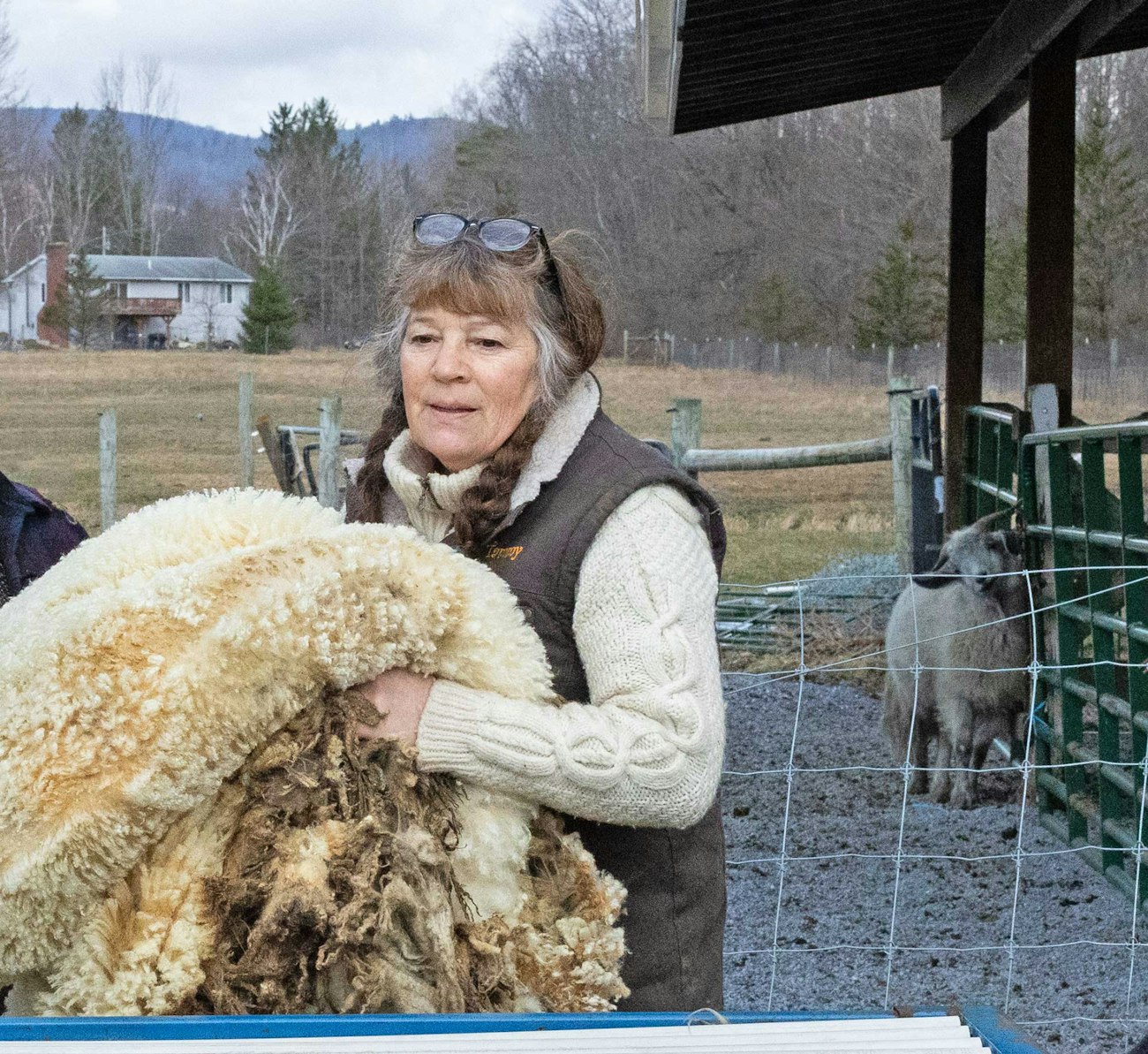Most knitters I know have a soft spot for sheep. We love their wool, in all its colors and varieties, and we might even have a few skeins in our stash that came from a sheep whose name we know. But our beloved sheep are often misunderstood. As prey animals, their best defenses are inscrutability, memory, and behavior when sensing danger. On their behalf, I'm here to dispel some myths.
Excuse me while I find my soapbox . . .
1. “A flock of sheep will flock.”
 Border Leicester begin playing and flocking with their peers within a few days of birth. Photo by Kate Larson
Border Leicester begin playing and flocking with their peers within a few days of birth. Photo by Kate Larson
A group of sheep is called a flock, but flock is also a verb used to describe the habit sheep have for moving as a group. They are able to move as one mass, often coming into a tight cluster, or in small groups, they might follow one another nose to tail. This helps them stay together as the flock navigates the landscape and protects against predators.
However, not all flocks will flock. I learned this lesson while working with a flock that contained several sheep breeds on a hilly Vermont farm. The entire group of 120 sheep would start moving in the desired direction as one beautiful being . . . and then the five Icelandic ewes would run in five different directions with an incredibly unhelpful vigor.
Icelandic is one of the breeds of sheep that has evolved to spread out on the landscape, making better use of space and looking in each nook and cranny for delicious forage. As winter weather approaches, the sheep are rounded back up and sorted into their respective farm flocks. In the image at the top of the page, you can see that all three sheep have a tag in one ear, and the other ear has the traditional notches that identify which flock the sheep belong to.
2.“Sheep are stupid.”
 Practice makes perfect. Kate's firm opinion is that sheep intelligence is part instinct, part managment. This is Mila, a first-time mother with her lamb. Photo by Kate Larson
Practice makes perfect. Kate's firm opinion is that sheep intelligence is part instinct, part managment. This is Mila, a first-time mother with her lamb. Photo by Kate Larson
Sheep are not stupid. In fact, research has shown time and again that they are quite intelligent. A popular 2001 article published in the journal Nature summarized loads of research pointing to the problem-solving skills and memory retention that are the hallmarks of ovine intelligence, and research has continued since then. Studies have shown that an individual sheep can remember fifty different sheep faces for two years. Additionally, they have shown an unusual ability to recognize their shepherds in photos (connecting a 3-D human with a 2-D black-and-white image). A University of Cambridge study found that sheep were able to learn and identify humans that they had never even met in different photos. In this YouTube clip, a keen ewe learns to recognize actress Emma Watson and recall her face to get treats.
In my experience as a shepherd, the more opportunities sheep have to problem solve, the better they are at it. Seems logical, right? The smartest sheep I have known were on farms with a series of pastures had had the flock constantly on the move, changing locations, learning new gates, and watching their shepherd for cues about every step.
3. Sheep are sheared once per year in the spring.
 Siri and Colin of Yankee Clippers Shearing. Photo by Ryan Langmaid
Siri and Colin of Yankee Clippers Shearing. Photo by Ryan Langmaid
While this is often the case, there are many flocks that have several shearing days each year. My flock of Border Leicesters, for example, have two shearing seasons. The adults are sheared in the spring right before lambing begins in April. Then, the new lambs will be sheared in August. Border Leicesters have fleeces that grow quickly, so the lambs shorn in August will already have several inches of wool before cold weather arrives in November.
Farms that have multiple breeds of sheep can have a complicated schedule of shearing to ensure that everyone is sheared at the right time. Different breeds of sheep have fleeces that grow at different rates (as in barely 3 inches per year to more than 15 inches per year), and shepherds of mixed flocks like Tammy White at Wing and a Prayer Farm have to carefully plan several shearing dates, subsequent woolen-mill orders, fiber festivals, and more.
Get a peek into Tammy's life at Wing and a Prayer Farm in the Yarn Chronicles. Including in episode 2, where you can get an up-close look at a vital but often misunderstood part of yarn-making: shearing.
Shepherding is as much an art as it is a science. The weather, the landscape, and the flock are constantly changing—nothing is static. Shepherds that dedicate themselves to keeping both the flock and the land healthy day after day, year after year, have my deepest admiration. All that love and labor are distilled into the skeins that reach your knitter's hands.
Enjoy!
— Kate
Resources
- Cambridge University News, “Sheep are able to recognise human faces from photographs.”
- Knolle, Franziska, et al. “Sheep recognize familiar and unfamiliar human faces from two-dimensional images.” Royal Society Open Science. November 8, 2017.


